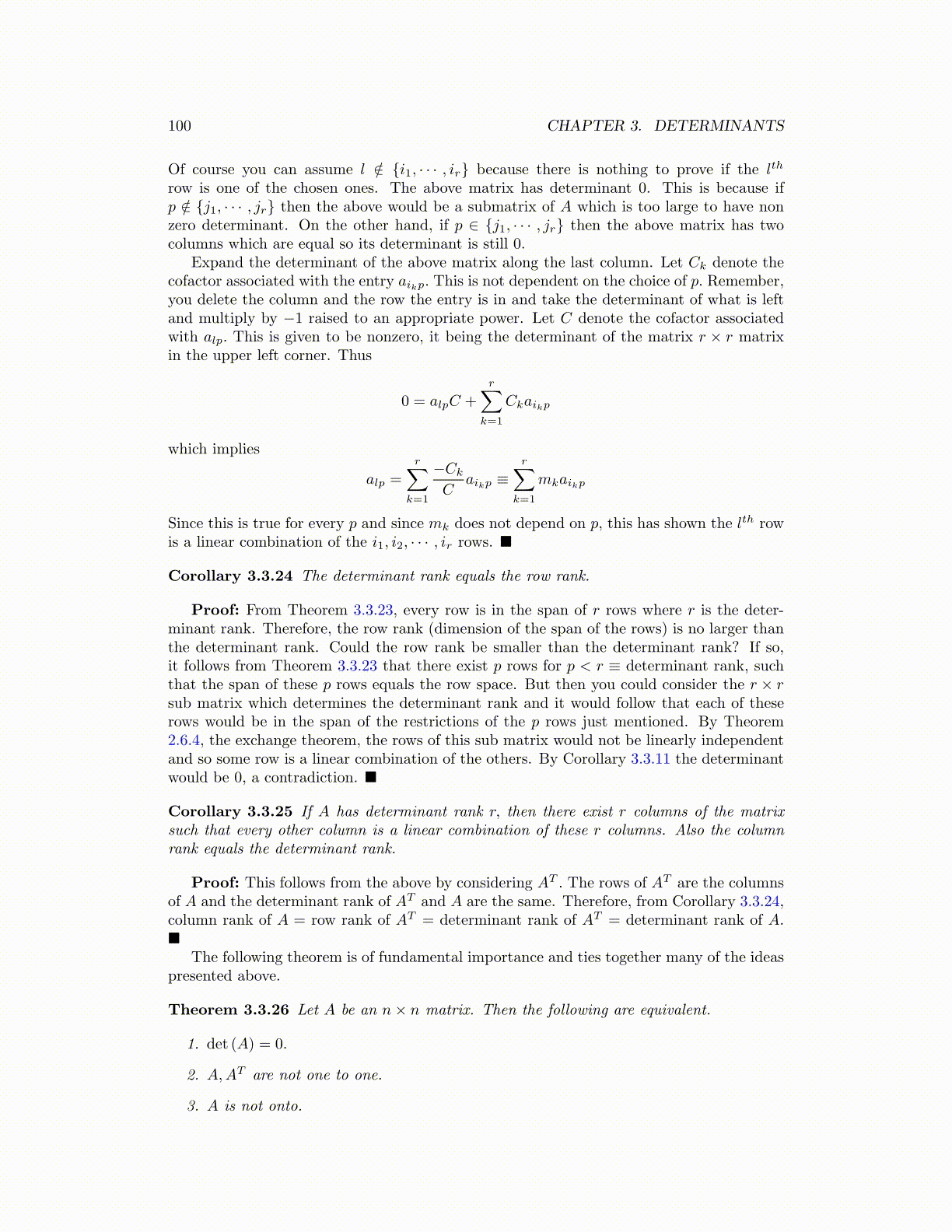
100 CHAPTER 3. DETERMINANTS
Of course you can assume l /∈ {i1, · · · , ir} because there is nothing to prove if the lth
row is one of the chosen ones. The above matrix has determinant 0. This is because ifp /∈ {j1, · · · , jr} then the above would be a submatrix of A which is too large to have nonzero determinant. On the other hand, if p ∈ {j1, · · · , jr} then the above matrix has twocolumns which are equal so its determinant is still 0.
Expand the determinant of the above matrix along the last column. Let Ck denote thecofactor associated with the entry aikp. This is not dependent on the choice of p. Remember,you delete the column and the row the entry is in and take the determinant of what is leftand multiply by −1 raised to an appropriate power. Let C denote the cofactor associatedwith alp. This is given to be nonzero, it being the determinant of the matrix r × r matrixin the upper left corner. Thus
0 = alpC +
r∑k=1
Ckaikp
which implies
alp =
r∑k=1
−Ck
Caikp ≡
r∑k=1
mkaikp
Since this is true for every p and since mk does not depend on p, this has shown the lth rowis a linear combination of the i1, i2, · · · , ir rows. ■
Corollary 3.3.24 The determinant rank equals the row rank.
Proof: From Theorem 3.3.23, every row is in the span of r rows where r is the deter-minant rank. Therefore, the row rank (dimension of the span of the rows) is no larger thanthe determinant rank. Could the row rank be smaller than the determinant rank? If so,it follows from Theorem 3.3.23 that there exist p rows for p < r ≡ determinant rank, suchthat the span of these p rows equals the row space. But then you could consider the r × rsub matrix which determines the determinant rank and it would follow that each of theserows would be in the span of the restrictions of the p rows just mentioned. By Theorem2.6.4, the exchange theorem, the rows of this sub matrix would not be linearly independentand so some row is a linear combination of the others. By Corollary 3.3.11 the determinantwould be 0, a contradiction. ■
Corollary 3.3.25 If A has determinant rank r, then there exist r columns of the matrixsuch that every other column is a linear combination of these r columns. Also the columnrank equals the determinant rank.
Proof: This follows from the above by considering AT . The rows of AT are the columnsof A and the determinant rank of AT and A are the same. Therefore, from Corollary 3.3.24,column rank of A = row rank of AT = determinant rank of AT = determinant rank of A.■
The following theorem is of fundamental importance and ties together many of the ideaspresented above.
Theorem 3.3.26 Let A be an n× n matrix. Then the following are equivalent.
1. det (A) = 0.
2. A,AT are not one to one.
3. A is not onto.